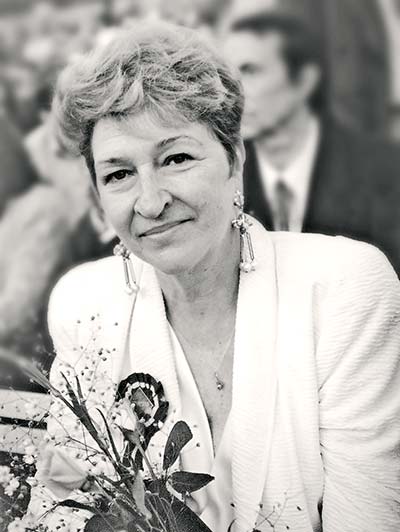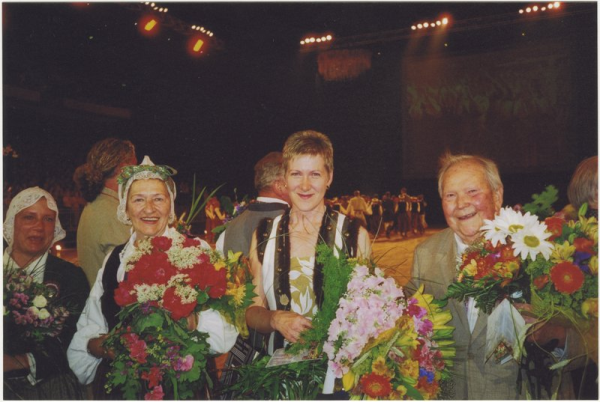Ingrīda Edīte Saulīte
1935
Educator, choreographer
One of the Dance Celebrations’ brightest and most active personalities.
Born 24 October 1935 in Rīga. Initial education at Rīga’s No 19 Seven-year school, also attending the Beatrise Vīgnere School of Plastic, followed by the Rīga Choreography School (1946–1952).
After graduation, she began working as a methodologist in the Choreography Department of the E. Melngailis Folk Art Centre (1952–1980, 1989–1993). In parallel, worked as a member of the repertoire editorial board at the Ministry of Culture (1980–1988) and as head of the Folk Art Department (1988–1989).
As a festival Chief choreographer, seeing how her colleagues struggled to get dancers to the right place in the arena, she introduced marking of the dance floor and drawings of dance performance choreographies in 1965, resulting in a significant improvement in the quality of the rehearsal process.
In total, has created around 100 choreographies that have been performed at many dance concerts, major performances and festivals. The Dance-celebration repertoire has repeatedly featured her folk-dance arrangements Jautrais stūris (Merry Corner) and Latviešu pāru deju svīta (Suite of Latvian Partner Dances) much loved by dancers. Latvia’s best-known poet, the late Imants Ziedonis said: “Saulīte has the most beautiful drawings: grand, in a simple but impressive composition.” (Ziedonis, Imants. Thinking of the next Song Celebration. Literatūra un Māksla (Literature and Art). 2 August 1985)
In the field of academic methodology, Saulīte has written five books, including Latvian Folk Dances (1993) and Latvian Folk-dance Arrangements (1995), compiled 15 collections of Latvian and non-Latvian dances, as well as prepared countless publications and conference content. Significant research into the history of dance celebrations is compiled in the seminal publication Dance Celebrations in Latvia.
Worked at the Jāzeps Vītols Latvian State Conservatory (1982–1999), teaching the history of Latvian folk and stage dance, and dance celebrations, and methodologies for producing large-scale dance performances.
A Chief choreographer at the 5th-12th Dance Celebrations, Honorary Chief choreographer at the13th-17th Dance Celebrations, 2nd-6th and 8th Latvian Schools’ Song and Dance Celebrations, Chief choreographer and Artistic Director of the Rīga-800 Festival, Chief choreographer for Rīga City dance groups (1991-2021), as well as Chief choreographer and artistic director for numerous other festivals and major concerts, generator of the idea for the Sudmaliņas (Flour Mill) international folk dance festival, as well as initiating the organisation of ballroom dancing competitions in Latvia (1959).
“I am delighted that the activities that were started many years ago to promote the functioning and growth of dance groups have survived and continue to develop. New-dance reviews, dance festivals for different generations and the Sudmaliņas international folk-dance festival keep our ensembles interested, and that is probably why dance groups are still growing in number.” (Lūsiņa, Inese. There is no stage enabling full-blooded expression . Diena. 26 October 2015)
Grand Officer, Order of the Three Stars, Latvian SSR People’s Performing Artist, Latvian SSR and Polish People’s Republic Orders of Honour for Cultural figures, Lifelong Stipendiate of the State Culture Capital Foundation.



































![Ingrīdas Saulītes dzīves un dejas līkloči / [teksta autore Inta Kārkliņa]](https://dziesmusvetki.lndb.lv/wp-content/uploads/objects/488693/resized/2resized_thumbnail.png)




